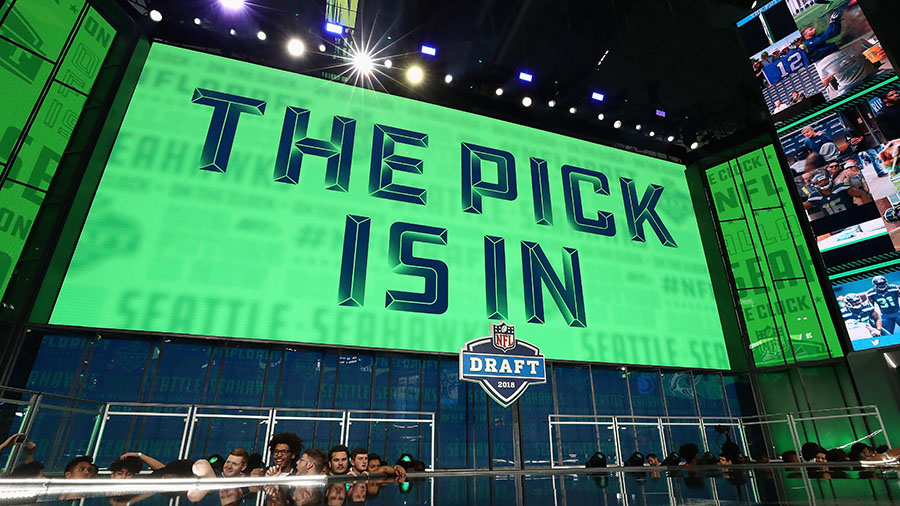The NFL Draft is a staple of the pro game, where franchises bring in new players. The draft order by which teams pick players can be paramount, determining a franchise’s future. This article explores the process behind the NFL Draft order and how it is determined every year.

The Underlying Principle: NFL’s Reverse Standings Order
The basis of the NFL Draft order is to offer competitive balance throughout the league. The easiest way to determine the draft order is by reversing last season’s standings. The team with the worst regular-season record gets the first pick in the first round, and the Super Bowl winner gets the last pick in every round.
This will create parity in the league by giving struggling teams access to star players who graduated from the top colleges. For instance, during the 2025 NFL Draft, the Tennessee Titans were granted the number one overall draft pick after they had completed the 2024 season with a 3-14 record.
Tiebreakers: Splits Decision
In the rare instance that teams are tied during the season with the same win-loss record, the NFL employs a set of tiebreakers to determine draft position:
- Strength of Schedule (SOS): It is calculated by taking the sum of the team’s opponents’ total win-loss record. The team with the poorer SOS gets the better draft pick, assuming they played worse teams.
- Divisional and Conference Tiebreakers: The usual playoff tiebreakers are employed for teams from the same division or conference.
- Interconference Tiebreakers: For interconference teams, additional tiebreakers such as head-to-head, win-loss percentage in shared games, and strength of win are considered.
These tiebreakers offer an equitable and ordered means of establishing a ranking order between interconference teams with identical records.
- Playoff Teams: Draft Pick Based on Elimination Round
- Playoff teams receive a draft pick based on the elimination round:
- Wild Card Round Defeated Teams: Picks 19–24
- Divisional Round Defeated Teams: Picks 25–28
- Conference Championship Losers: Picks 29–30
- Super Bowl Runner-Up: Pick 31
- Super Bowl Champion: Pick 32
Each group is seeded within groups based on their regular-season record, using tiebreakers as needed.
Later Rounds: Alternating Order Between Tied Teams
If there are a number of tied records, the NFL cycles the draft pick between such teams in subsequent rounds. For example, if three teams are tied and have picks A-B-C in the first round, the second round would be B-C-A, and so on.
Rotation ensures an equal number of draft positions per round, with no team ever drafting before other teams with the same record
Compensatory Picks: Reimbursing Teams for Lost Players
Aside from the standard draft picks, the NFL provides compensatory picks for teams that lost more or better compensatory free agents (CFAs) than they acquired during the last season. They are computed according to a formula involving such factors as the departing and incoming players’ salaries, playing time, and postseason honors.
Compensatory picks are added at the end of rounds three to seven, providing more space for teams to bolster their player rosters.
Trades: Draft Strategy Flexibility
Teams can trade their draft picks, thereby creating some flexibility in reordering based on strategic requirements. Trades can be obtained through the exchange of picks within the same draft, future picks, or players.
This lottery system adds a dynamic element to the draft, as teams are looking to acquire wanted players or build assets for the future.
The Debate Over a Draft Lottery System
In contrast to the NBA, where a draft lottery is used to avoid teams from losing games on purpose in order to lose (an activity that has been called “tanking”), the NFL has traditionally employed the reverse order. There have been suggestions, however, for using a lottery system in the NFL.
Last week, in an interview, veteran coach Bill Belichick suggested the NFL adopt a lottery system to address tanking problems. In his view, “It’s about preserving the integrity of the game and having the teams compete to win every week.”
While nothing has been initiated officially in the direction of a lottery system by the NFL, the discussion is a manifestation of ongoing attempts to introduce competitiveness and fairness into the league.
KEEP READING: NFL Draft Eligibility Rules Explained: Who Can Enter and When?
The NFL Draft order is a methodical plan to promote fairness and maintain competitive balance in the league. Through improved draft picks distributed to inferior teams and provisions like tiebreakers and compensatory picks, the NFL presents a fair and logical system of team construction.
As the league progresses, discussions about potential reforms, such as introducing a draft lottery, reflect its commitment to preserving the integrity and competitiveness of the game.
College Sports Network has you covered with the latest news, analysis, insights, and trending stories in football, men’s basketball, women’s basketball, and baseball!

